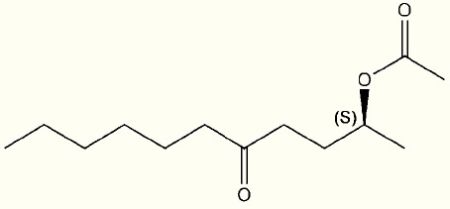Newly available Pherobank product, pheromone lure for Resseliella theobaldi
Resseliella theobaldi
English: Raspberry cane midge
German: Himbeerrutengallmücke
Dutch: Frambozenschorsgalmug
In Europe, Raspberry cane midge, Resseliella theobaldi Barnes (Diptera: Cecidomyiidae), is a widespread pest of cultivated red raspberry, and occasionally loganberry, both in field-grown crops and under protected cultivation. The larvae feed in natural splits in the primocanes and these feeding wounds allow entry of infection by several fungi. The complex of larval feeding and fungal infection is termed midge blight. Midge blight leads to poor vigour of second-year canes with fewer fruit-bearing lateral shoots. Attacked canes may snap off, grow poorly, or die. Yield losses frequently exceed 50%, often making the crop unprofitable to harvest. Depending upon latitude, there are three or four generations per year. Efficient control is difficult to achieve due to the sheltered place where the larval feeding and the short lifespan of adults. Monitoring of the male flight period is possible with sex pheromone traps.
The female pheromone of Resseliella theobaldi has been identified in 2008 as (S)-2-acetoxy-5-undecanone (Figure 1) by the group of professor David Hall (https://doi.org/10.1007/s10886-009-9588-6).
Our chemists have now synthesized the pheromone and ready-for-use lures are available from Pherobank.
For more information about this insect please see:
https://www.cabi.org/isc/datasheet/47955
https://gd.eppo.int/taxon/THOMTE
- Resseliella theobaldi pheromone lure, Pherobank article #: 50461
- Only available as pheromone lures
Free samples for testing purposes are currently available


